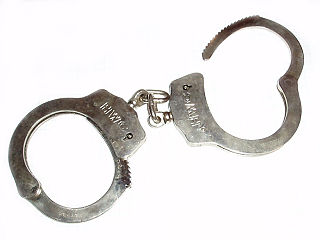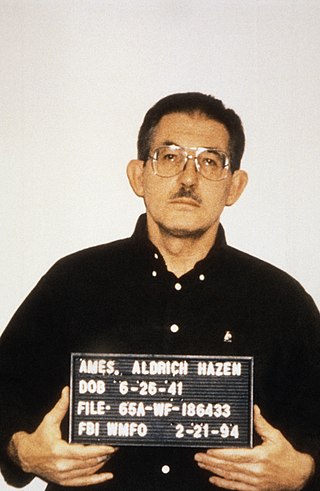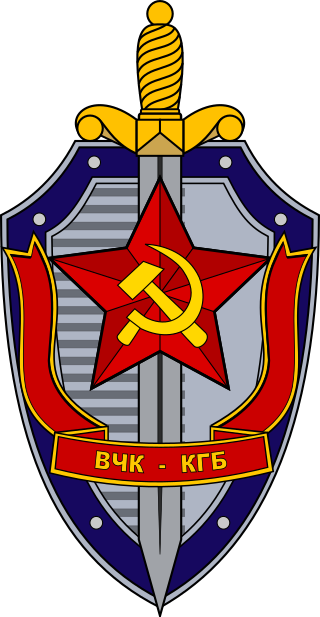Operation Lincoln was a CIA program in which travelers to the Soviet Union would be briefed before a trip to the USSR, then debriefed after they returned. [1]
Operation Lincoln began in the late 1950s. In the first phase, the CIA trained scientists to conduct espionage in the Soviet Union. They had difficulty recruiting useful participants, particularly as many scientists were concerned with the potential impact on their careers of "spying". [2] From the 4,000 travelers that they screened, the CIA selected participants who spoke the native language, particularly those with technical and scientific backgrounds. [3] Seventy civilian agents were sent to the USSR in 1959 to gather information on Soviet rocketry. In 1960, another 100 agents were dispatched. [4] This first phase enabled the CIA to map a previously unknown network of antiaircraft missiles. [3]
The 1960 U-2 incident influenced the Soviet Union to enact policies such as restricting photography by tourists. [3] As a result, in 1961, the CIA began the second phase of Operation Lincoln, which they defined as "friendly conversation to the point of revealing something useful." [2] Directed by Eloise Page, scientists were encouraged to gather technical intelligence during their vacations to the Soviet Union. [5] Page insisted that the scientists use no hidden cameras or secret notes. The CIA conducted extensive background checks on all participants to verify that they were suited for the operation and to ensure that no Soviet agents became involved. One volunteer participant was John Steinbeck, however Page wanted the operation to concentrate on scientists. [3]
The Operation Lincoln "tourists" received briefings and counterintelligence training before their travels. Each participant was provided with background information on the Soviet scientists they might meet. Of the 55 participants screened in 1960, 34 brought back intelligence on air defense missile sites, flight routes, and technical details about missile weaponry. Operation Lincoln had become of one of the most successful programs for obtaining intelligence about the Soviets. [3]

Espionage, spying, or intelligence gathering is the act of obtaining secret or confidential information (intelligence). A person who commits espionage is called an espionage agent or spy. Any individual or spy ring, in the service of a government, company, criminal organization, or independent operation, can commit espionage. The practice is clandestine, as it is by definition unwelcome. In some circumstances, it may be a legal tool of law enforcement and in others, it may be illegal and punishable by law.

Cold War espionage describes the intelligence gathering activities during the Cold War between the Western allies and the Eastern Bloc. Both relied on a wide variety of military and civilian agencies in this pursuit.

Aldrich Hazen Ames is an American former CIA counterintelligence officer who was convicted of espionage on behalf of the Soviet Union and Russia in 1994. He is serving a life sentence, without the possibility of parole, in the Federal Correctional Institution in Terre Haute, Indiana. Ames was known to have compromised more highly classified CIA assets than any other officer until Robert Hanssen, who was arrested seven years later in 2001.

On 1 May 1960, a United States U-2 spy plane was shot down by the Soviet Air Defence Forces while conducting photographic aerial reconnaissance deep inside Soviet territory. Flown by American pilot Francis Gary Powers, the aircraft had taken off from Peshawar, Pakistan, and crashed near Sverdlovsk, after being hit by a surface-to-air missile. Powers parachuted to the ground and was captured.

The First Main Directorateof the Committee for State Security under the USSR council of ministers was the organization responsible for foreign operations and intelligence activities by providing for the training and management of covert agents, intelligence collection administration, and the acquisition of foreign and domestic political, scientific and technical intelligence for the Soviet Union.

Oleg Vladimirovich Penkovsky, codenamed Hero and Yoga was a Soviet military intelligence (GRU) colonel during the late 1950s and early 1960s. Penkovsky informed the United States and the United Kingdom about Soviet military secrets, including the appearance and footprint of Soviet intermediate-range ballistic missile installations and the weakness of the Soviet intercontinental ballistic missile program. This information was decisive in allowing the US to recognize that the Soviets were placing missiles in Cuba before most of them were operational. It also gave US President John F. Kennedy, during the Cuban Missile Crisis that followed, valuable information about Soviet weakness that allowed him to face down Soviet leader Nikita Khrushchev and resolve the crisis without a nuclear war.
Jacob Golos was a Ukrainian-born Bolshevik revolutionary who became an intelligence operative in the United States on behalf of the USSR. A founding member of the Communist Party of the United States of America (CPUSA), circa 1930 Golos became involved in the covert work of Soviet intelligence agencies. He participated in procuring American passports by means of fraudulent documentation, and the recruitment and coordination of activities of a broad network of agents.
As early as the 1920s, the Soviet Union, through its GRU, OGPU, NKVD, and KGB intelligence agencies, used Russian and foreign-born nationals, as well as Communists of American origin, to perform espionage activities in the United States, forming various spy rings. Particularly during the 1940s, some of these espionage networks had contact with various U.S. government agencies. These Soviet espionage networks illegally transmitted confidential information to Moscow, such as information on the development of the atomic bomb. Soviet spies also participated in propaganda and disinformation operations, known as active measures, and attempted to sabotage diplomatic relationships between the U.S. and its allies.
In the United States, during the Cold War, the missile gap was the perceived superiority of the number and power of the USSR's missiles in comparison with those of the U.S.. The gap in the ballistic missile arsenals did not exist except in exaggerated estimates, made by the Gaither Committee in 1957 and in United States Air Force (USAF) figures. Even the contradictory CIA figures for the USSR's weaponry, which showed a clear advantage for the US, were far above the actual count. Like the bomber gap of only a few years earlier, it was soon demonstrated that the gap was entirely fictional.
Adolf Georgiyevich Tolkachev was a Soviet electronics engineer. He provided vital documents to the United States Central Intelligence Agency (CIA) between the years 1979 and 1985. Working at the Soviet radar design bureau Phazotron as one of the chief designers, Adolf Tolkachev gave the CIA complete detailed information about projects such as the R-23, R-24, R-33, R-27, and R-60, S-300 missile systems; fighter-interceptor aircraft radars used on the MiG-29, MiG-31, and Su-27; and other avionics. He was executed by KGB Police in Moscow for being a spy in 1986.

The Central Intelligence Agency, known informally as the Agency and historically as the Company, is a civilian foreign intelligence service of the federal government of the United States, officially tasked with gathering, processing, and analyzing national security information from around the world, primarily through the use of human intelligence (HUMINT) and conducting covert action through its Directorate of Operations. As a principal member of the United States Intelligence Community (IC), the CIA reports to the Director of National Intelligence and is primarily focused on providing intelligence for the President and Cabinet of the United States. Following the dissolution of the Office of Strategic Services (OSS) at the end of World War II, President Harry S. Truman created the Central Intelligence Group under the direction of a Director of Central Intelligence by presidential directive on January 22, 1946, and this group was transformed into the Central Intelligence Agency by implementation of the National Security Act of 1947.
Countries with major counterintelligence failures are presented alphabetically. In each case, there is at least one systemic problem with seeking penetration agents when few or none may actually have existed, to the detriment of the functioning of the national service involved.
CIA activities in North Korea began primarily at the beginning of the Cold War in 1949. At the time, the U.S. viewed North Korea or the Democratic People's Republic of Korea (DPRK) as a Soviet puppet regime. This posed a threat to the U.S. government, and the Central Intelligence Agency (CIA) began to focus more of its resources towards the DPRK. During the Cold War, the CIA gathered crucial intelligence regarding the DPRK such as its plans and capacities regarding an attack on America and its ally, South Korea. In later history, the CIA and sixteen other U.S. intelligence agencies have primarily focused strictly on the DPRK'S weapons and capabilities.
With Europe stabilizing along the Iron Curtain, the CIA attempted to limit the spread of Soviet influence elsewhere around the world. Much of the basic model came from George Kennan's "containment" strategy from 1947, a foundation of US policy for decades.
Pyotr Semyonovich Popov was a colonel in the Soviet military intelligence apparatus (GRU). He was the first GRU officer to offer his services to the Central Intelligence Agency after World War II. Between 1953 and 1958, he provided the United States government with large amounts of information concerning military capabilities and espionage operations. He was codenamed ATTIC for most of his time with the CIA, and his case officer was George Kisevalter.
The United States of America has conducted espionage against the Soviet Union and its successor state, the Russian Federation.

The Committee for State Security (CSS) was the main security agency for the Soviet Union from 13 March 1954 until 3 December 1991. As a direct successor of preceding agencies such as the Cheka, GPU, OGPU, NKGB, NKVD and MGB, it was attached to the Council of Ministers. It was the chief government agency of "union-republican jurisdiction", carrying out internal security, foreign intelligence, counter-intelligence and secret police functions. Similar agencies operated in each of the republics of the Soviet Union aside from the Russian SFSR, where the KGB was headquartered, with many associated ministries, state committees and state commissions.
Technical Intelligence (TECHINT) is intelligence about weapons and equipment used by the armed forces of foreign nations. The related term, scientific and technical intelligence, addresses information collected or analyzed about the broad range of foreign science, technology, and weapon systems.

Between 1946 and 1960, the United States Air Force conducted aerial reconnaissance flights over the Soviet Union in order to determine the size, composition, and disposition of Soviet forces. Aircraft used included the Boeing B-47 Stratojet bomber and—from 1956—the Lockheed U-2 spy plane specifically designed for high-altitude reconnaissance flight. The overflight program was ended following the 1960 U-2 incident.
Carl Ernest Duckett was the founder of the Central Intelligence Agency's science and technology operations.








